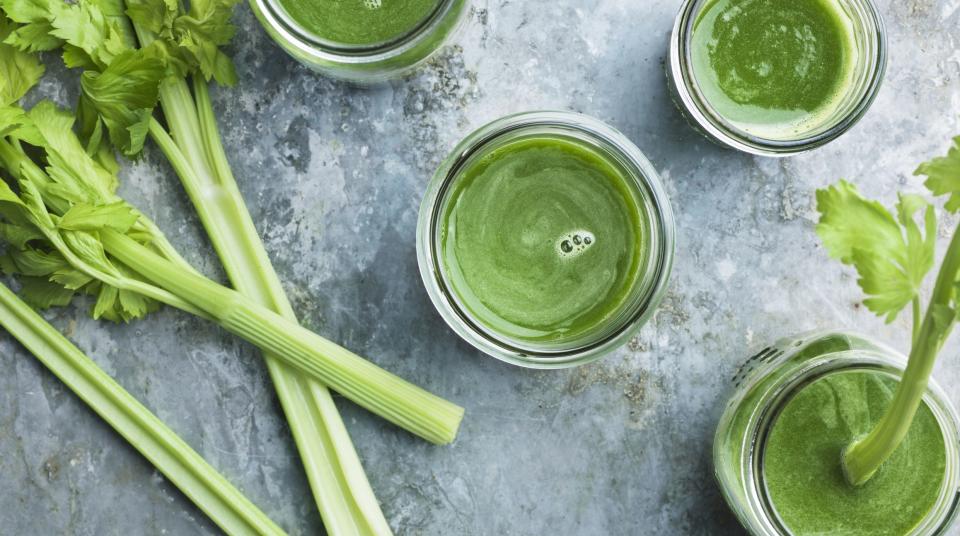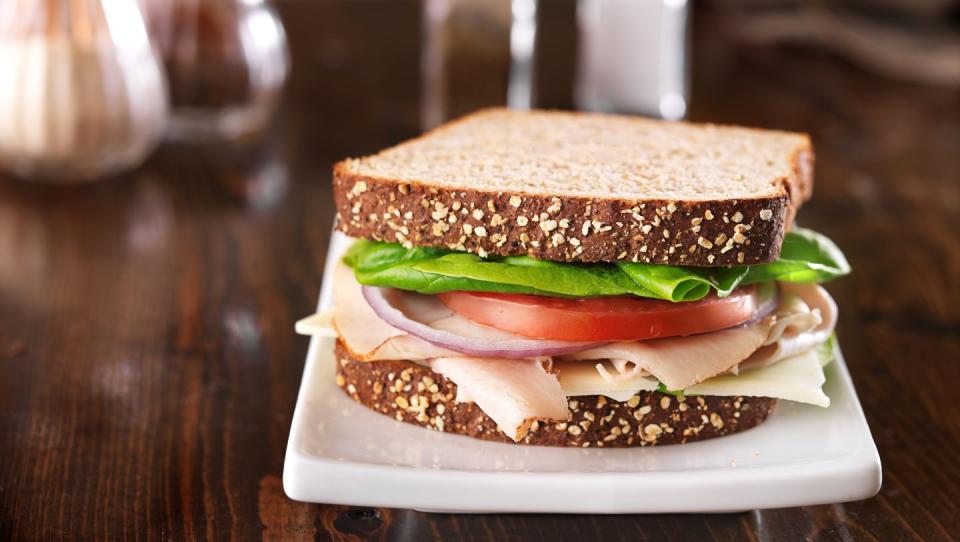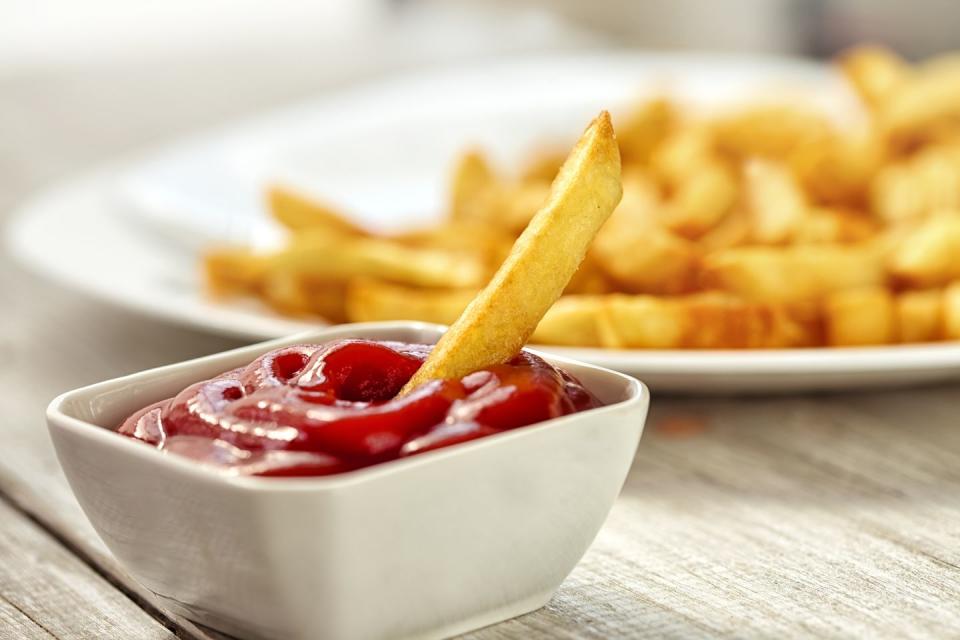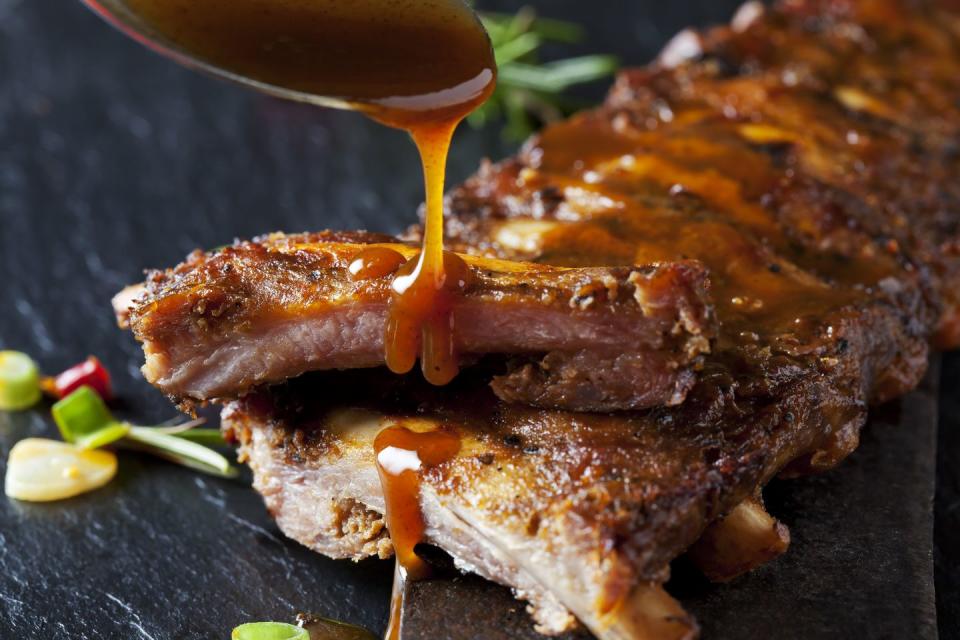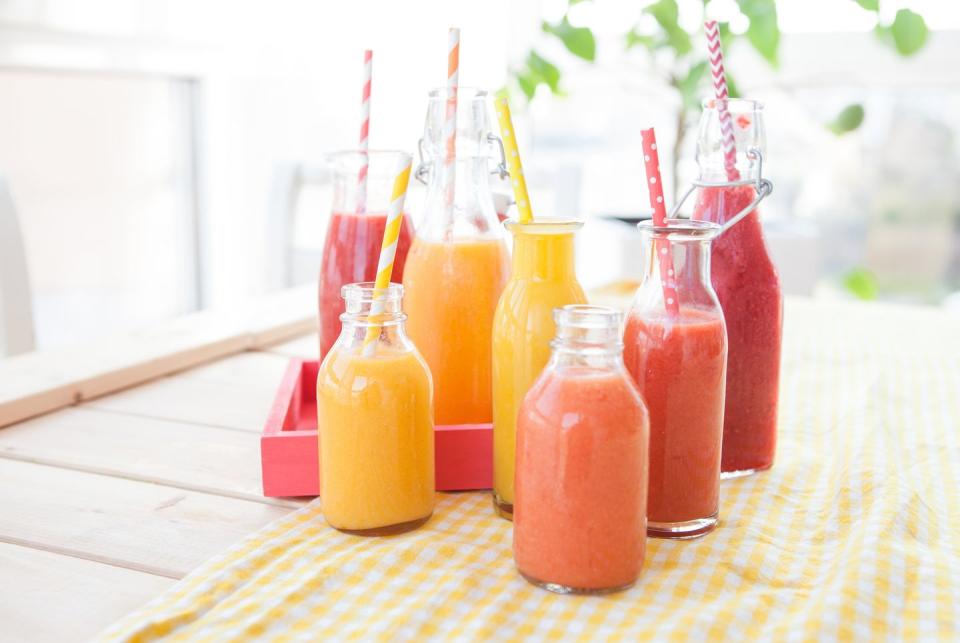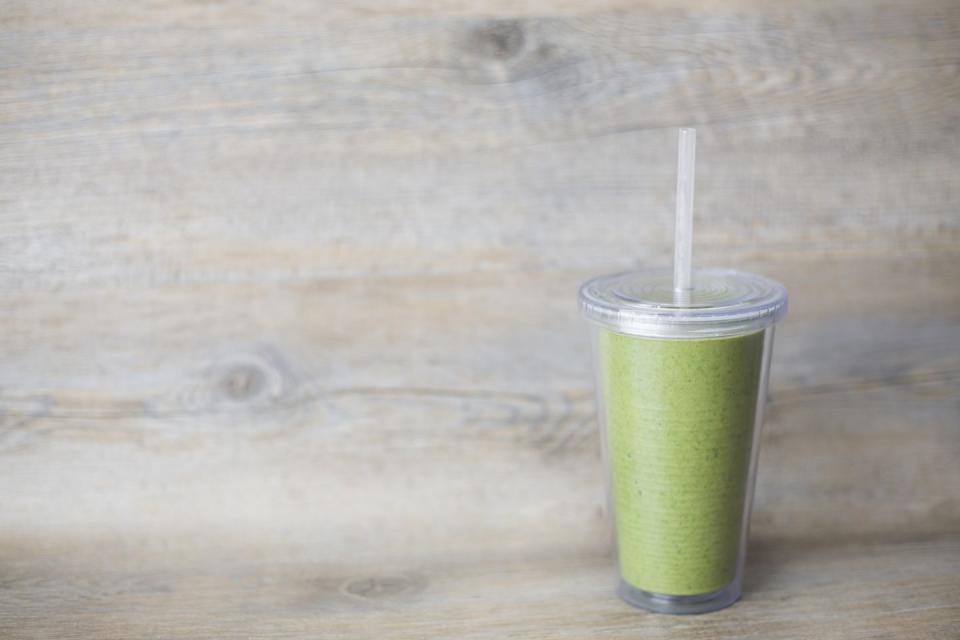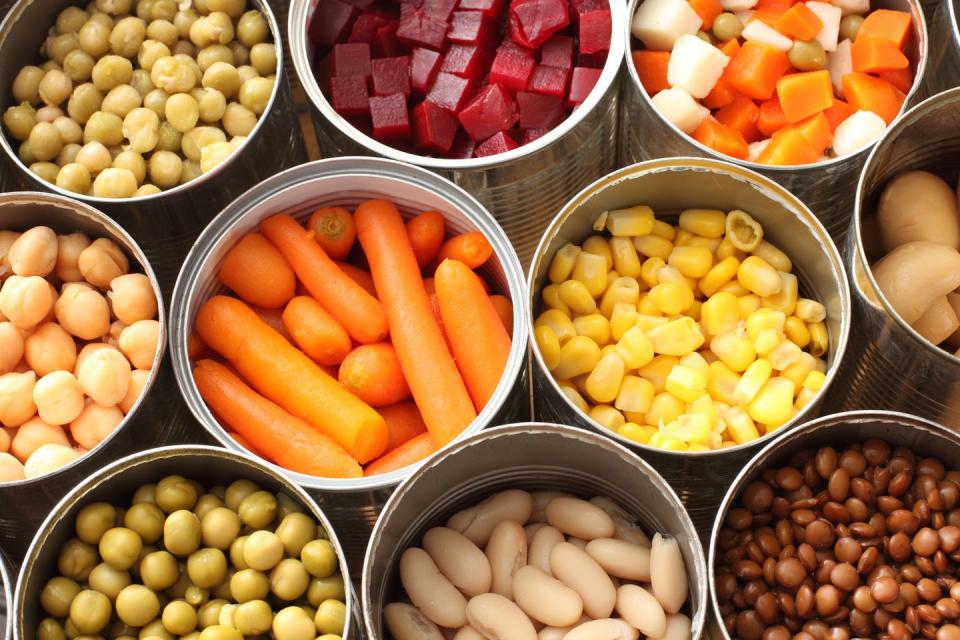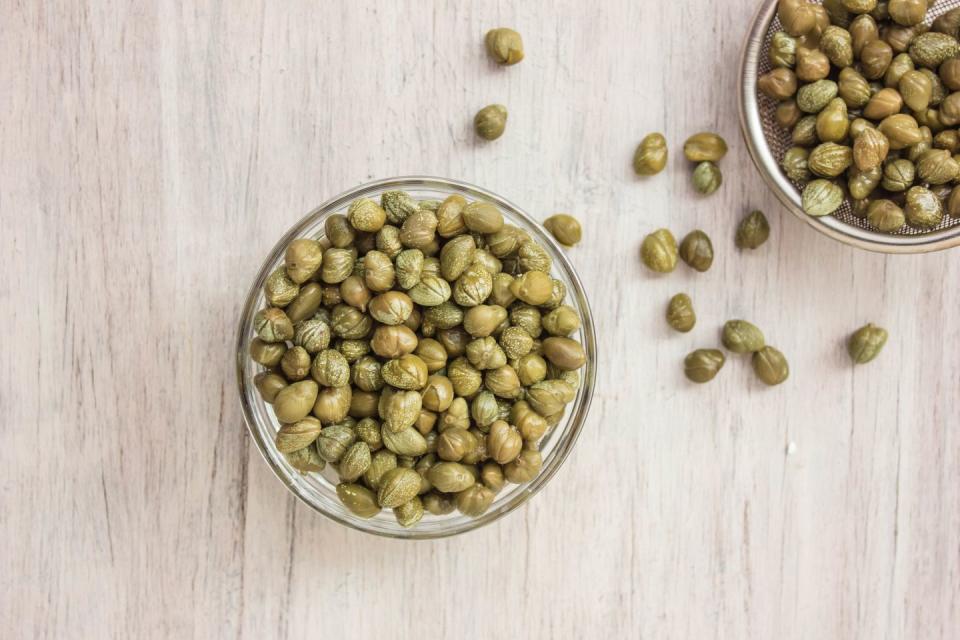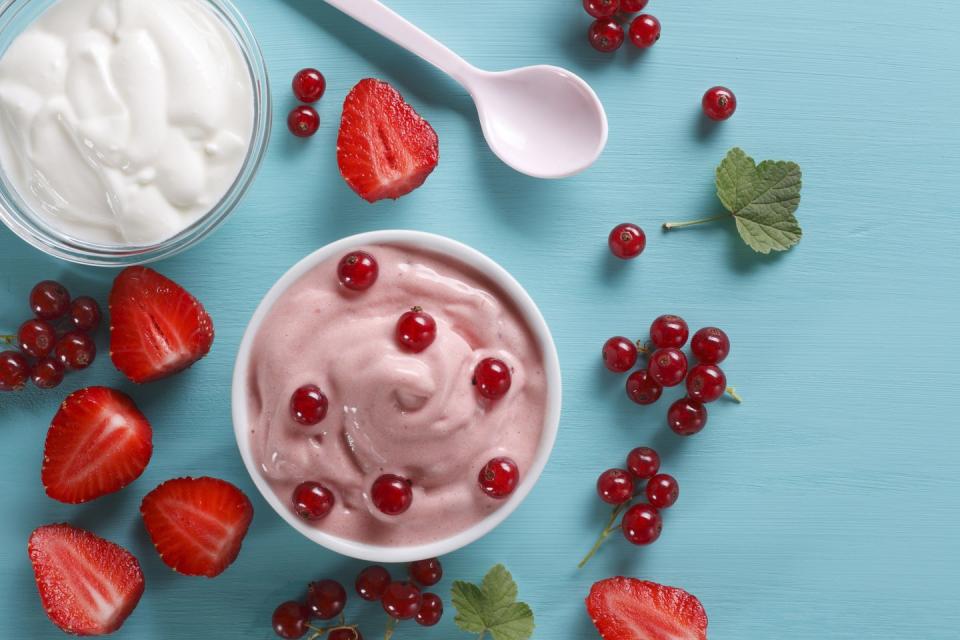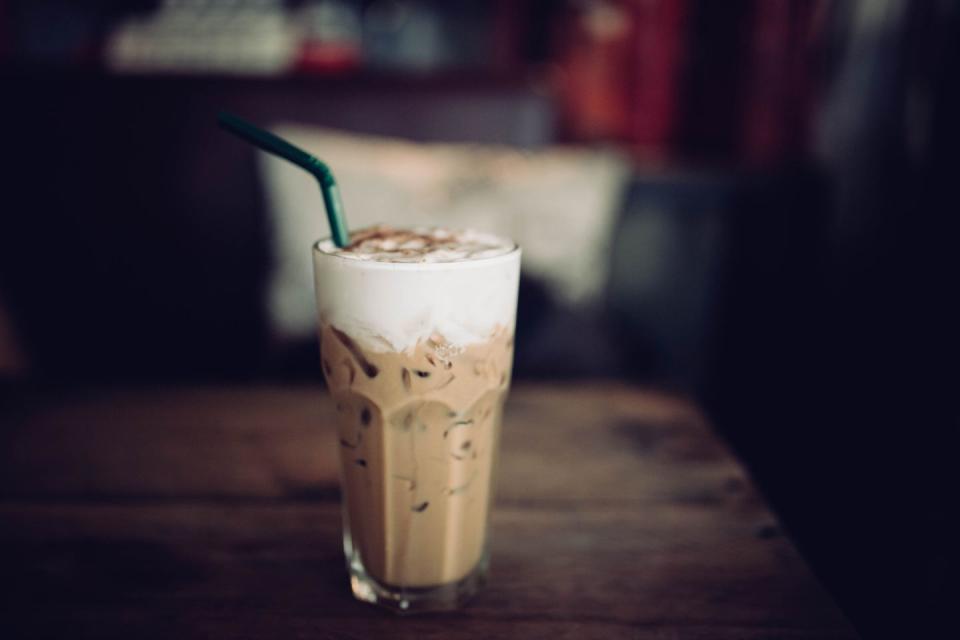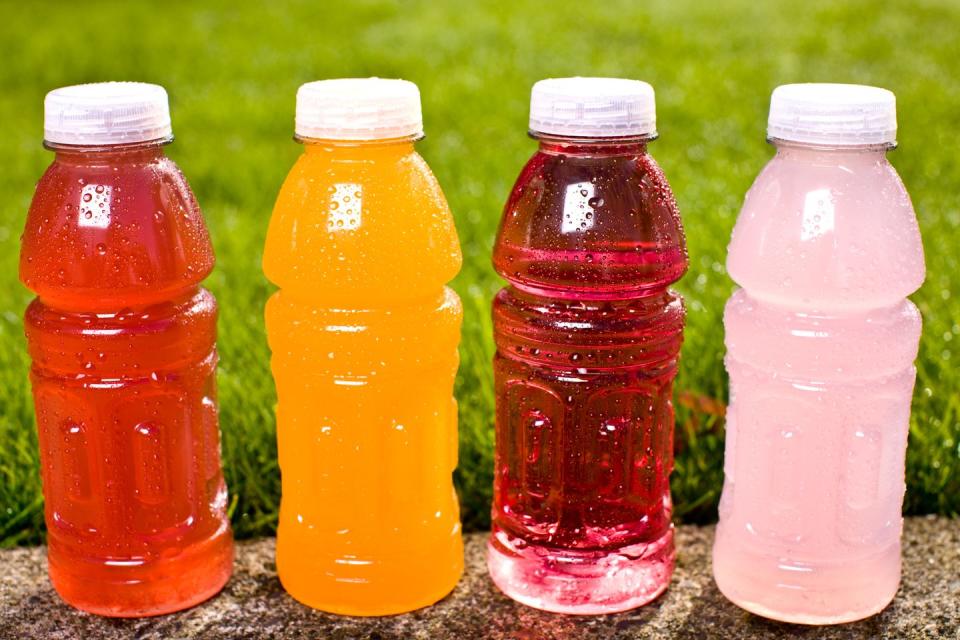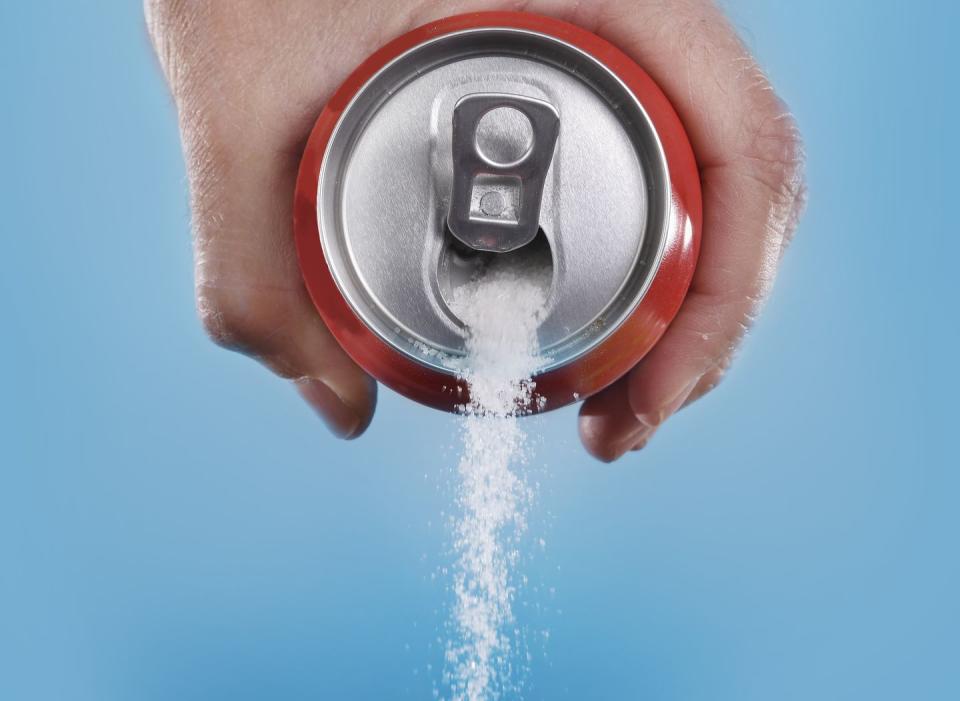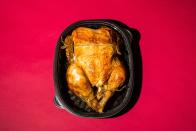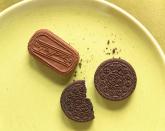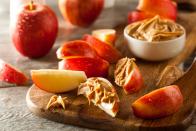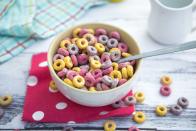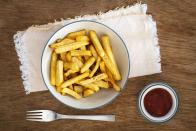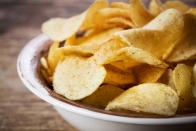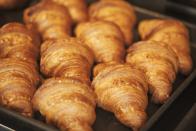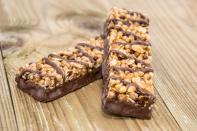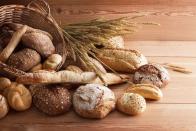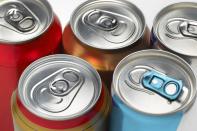Cardiologists Say These Are The Worst Foods For Your Heart, And There Goes My Whole Diet
- 1/41
Cardiologists Say These Are The Worst Foods For Your Heart, And There Goes My Whole Diet
Take heart: What’s on your plate can help maintain your cardiac capacity. “Heart-healthy foods contain nutrients that have been shown to benefit the cardiovascular system or reduce the risk of developing heart disease by lowering 'bad' LDL cholesterol and blood triglycerides, reducing blood pressure, controlling weight and/or improving insulin sensitivity,” says Rania Batayneh, MPH, the owner of Essential Nutrition For You and the author of The One One One Diet.
Omega-3s, potassium, calcium, magnesium, fiber, phytonutrients and antioxidants earn top marks in these categories, making the Mediterranean diet and the DASH diet top choices for those seeking to maintain or improve heart health.
Science backs up this premise: A menu centered around produce, whole grains, nuts and beans, plus a little dairy and heart-healthy fats can help reduce your risk for cardiovascular disease by about a third, according to a 2016 study in theJournal of the American College of Cardiology. So which foods get the green light from dietitians and which ones get the red light? Here are the 40 worst foods for your heart.
Johner Images - Getty Images - 2/41
Processed deli meats
Ditch the deli. "Even the lower-fat versions of cured lunch meats contain the preservative sodium nitrate," says Suzanne Fisher, RD, LDN, founder of Fisher Nutrition Systems in Cooper City, Florida.
Nitrates may increase internal inflammation, and "chronic inflammation has a direct link to the development of atherosclerosis," the stiffening or narrowing of the arteries, she adds.
rez-art - Getty Images - 3/41
Hot dogs
Linked closely to cold cuts is another cured meat option: franks.
“Hot dogs and sausages can be high in saturated fat. Even low-fat options tend to be packed with salt. It’s important to watch your sodium intake, as more dietary sodium often leads to higher blood pressure,” Batayneh says.
natapetrovich - Getty Images - 4/41
Rotisserie chicken
Same goes for supermarket roasted birds—they often contain far more sodium and saturated fat than your typical home-cooked poultry products if you purchase them fully seasoned and with skin on.
Roast your own at home (try our Ultimate Roasted Whole Chicken recipe!) to control the amount of added sodium or seek out an unseasoned chicken and remove the skin to trim down on saturated fat.
Bloomberg Creative Photos - Getty Images - 5/41
Ketchup
You might want to shake up your condiment strategy, as many store-bought ones are loaded with added sugar and/or sodium.
"Ketchup is very high in sodium as well," says Juan Rivera, MD, a cardiologist in Miami, Florida and chief medical correspondent for Univision Network and the author of The Mojito Diet.
Just two tablespoons contains 320 milligrams of sodium—14 percent of the way to your daily suggested limit of 2,300 milligrams, recommended by the American Heart Association. Plus, it boasts eight grams of sugar per two-tablespoon serving.
zeljkosantrac - Getty Images - 6/41
Barbecue sauce
In related condiment news, it’s best for your heart to steer clear of (or go light on) the sauce at your cookout. A couple tablespoons of the typical bottle variety has about 310 milligrams of sodium. Seek out Tessamae’s or Annie’s for a bit less sodium and fewer added sugars, or better yet: make your own and season to taste.
Westend61 - Getty Images - 7/41
Table salt
About 70 percent of our total sodium consumption comes from food we find in packages or eat at restaurants. Another 15 percent is found naturally in ingredients. But that leaves another 15 percent or so of sodium that we're completely in control of adding ourselves, either via the salt shaker on the table or by the spoonful into recipes.
Start by adding half of what a recipe calls for, and scale up to only use what you need. So you don't shake on extra out of habit, leave the salt in the kitchen and only bring it to the table if you need it after the first bite.
Joe Alfano / EyeEm - Getty Images - 8/41
Reduced-fat salad dressings
What makes reduced-fat salad dressings a cardiac crime is that they're actually hidden sources of sugar and salt, says Fisher.
“When fat is removed, sugar is typically added to maintain the taste and texture,” she says. Just because it’s low in fat or calories, it doesn’t mean it’s healthy.
“I recommend my clients to look beyond macronutrients. Even when macros fall perfectly in line with what’s traditionally recommended for fat, carbohydrates and protein levels, a diet can fall short on nutrition,” Fisher says. “For example, are the carbohydrate sources highly-processed and low in fiber? Is the protein lean? Is the fat heart-healthy?”
VeselovaElena - Getty Images - 9/41
Fat-free packaged snacks
Even worse than reduced-fat is unnaturally zero-fat. “Fat-free packaged foods were once touted as a healthy option for individuals wanting to lose weight and maintain a healthier lifestyle,” Fisher says. No longer.
A good rule of thumb: Avoid any product that is not normally fat-free. What it doesn't have in fat, it makes up for in sugar.
“Read food labels and ingredient lists to determine many grams of sugar may have been added as a fat substitute. Many types of natural fats are healthy and promote satiety, which in the long run can reduce cravings and overeating,” she continues.
Gentl and Hyers - Getty Images - 10/41
Fat-free peanut butter
Seek out an all-natural, full-fat and sugar-free nut butter for a great source of heart healthy monounsaturated fats. “Low-fat peanut butters usually contain the same amount of calories as its conventional counterpart. Again, you’re trading fat for sugar,” Fisher says.
The ingredient list should read: “Peanuts, Salt.” You’ll earn bonus points from Fisher if you can spot or grind up a jar that’s made with nuts alone (in other words, without extra sodium).
bhofack2 - Getty Images - 11/41
Sugary cereal
In another example of “not all fats are bad,” take a second look at the nutrition label of your cold cereal. Does it have more than eight grams of sugar per serving to make up for its low-fat level? Skip it.
“Dietary fat was the enemy for so many years. Now, most experts agree that a diet high in added sugar may be just as big of a threat by contributing to obesity, inflammation, high cholesterol and diabetes—all of which are risk factors for heart disease,” Batayneh says.
Carol Yepes - Getty Images - 12/41
Flavored milk alternatives
Not all nut milks are created equal. “Flavored and sweetened milk substitutes line supermarket shelves, making it difficult to choose the healthiest option,” Fisher says.
She suggests snagging a cardio-protective nut milk, such as unsweetened almond milk. Additions, like chocolate and vanilla flavoring, can quickly crank up the calories.
bhofack2 - Getty Images - 13/41
Fried chicken
More fried food, more problems. Study participants who consumed larger amounts of fried food had higher risk for death from coronary artery disease, as reported in The American Journal of Clinical Nutrition.
“Conventional frying methods may include oils that contain trans fats, a type of fat shown to raise the bad type of cholesterol and lower the good kind,” Batayneh says.
Trans fats rose in popularity in recent decades due to their ability to be reused again and again in commercial fryers, but now that their true nutrition colors are coming to light, the U.S. Food & Drug Administration (FDA) has banned their use. Restaurants and food manufacturers have until January 1, 2020 to completely phase them out.
dbvirago - Getty Images - 14/41
French fries
It’s not just battered and fried bird that’s tough on your ticker, though. High levels of potato consumption has been linked to increased risk for both hypertension and type 2 diabetes in scientific research. And frying the spuds delivers a one-two punch to your cardiac health.
Westend61 - Getty Images - 15/41
Potato chips
Increased servings of potato chips tacked on more pounds than any other foods (including sugary drinks, processed meats and red meat) in a New England Journal of Medicine study.
In addition to ample calories—160 calories per serving for 15 Lay’s—chips are low in fiber and protein while offering a good shake of sodium.
Pavlo_K - Getty Images - 16/41
Fruit smoothies
Serving size and sugars can be deceptive in these sips. “What could seem healthier than a fruit smoothie? In theory they should be healthy, unless you count how many grams of sugar you are actually consuming,” Fisher notes.
Consider how many pieces of fruit it takes squeeze one full glass of juice. “Plus, by drinking fruit instead of eating it whole, you lose the essential fiber that could help normalize elevated blood lipids—a key risk factor of heart disease,” Fisher says.
picalotta - Getty Images - 17/41
Green juices
Same goes for green juices, Fisher says. If you do decide to down one, be mindful of portion size. Most bottles and restaurant cups are made for one, but they most likely contain two or more servings. “Thus doubling or tripling the calories and sugar grams you may be drinking in one sitting,” she says
Jennifer A Smith - Getty Images - 18/41
Canned soup
While sodium ranges can vary, most broths contain at least 500 milligrams of sodium per cup. Mix in other salty ingredients, and you’ll score more than one-third of your daily sodium limit in one serving.
“Canned soups are extremely high in sodium, which can increase blood pressure for everyone and exacerbate the condition of individuals with heart failure,” Rivera says.
rez-art - Getty Images - 19/41
Canned vegetables
Veggies can fall under the same trap.
“This does not apply to all canned vegetables, in fact some may be a great addition to your weekly meals! However some canned vegetable products are packaged with excess added sodium which can take a vegetable with no salt and make it have more than a processed snack item,” says Jenna A. Werner, R.D., creator of Happy Slim Healthy. “I always advise my clients: Read those labels.”
FotografiaBasica - Getty Images - 20/41
Capers
Although these itty-bitty flower buds contain next to no calories, they can crank up the sodium level of your bagel and lox or grilled dish fast. Since they come pickled in a salty brine, just one tablespoon of capers has 400 milligrams of sodium.
Lejla Siljak / EyeEm - Getty Images - 21/41
Fruit-flavored yogurt
Sometimes, it’s good to be plain—as in plain Greek yogurt. "Fruity yogurts can contain upwards of six teaspoons of sugar per serving. A better choice is to buy plain Greek yogurt and mix it with your own fresh or frozen unsweetened fruit," Fisher says. "The fruit will supply fiber and phytonutrients that premixed fruit yogurt lacks."
Ivan Bajic - Getty Images - 22/41
Granola
This morning favorite can crank up the calories in your breakfast quickly, if you're not careful with portion sizes. “Most granola is packed with sugar and calories and deficient in essential nutrients and fiber. The better choice is oats or a low-sugar, whole-grain cereal,” Fisher says.
Tassii - Getty Images - 23/41
Fancy coffee drinks
Your complete daily dose of sugar might be hiding out in that grande cup.
“If that’s not enough to shock you, think about this: a grande blended frappuccino may provide more carbohydrates than 4 ½ pieces of bread, without the fiber or any nutritional value, really,” Werner says. “When ordered with whole milk, these drinks can shoot your saturated fat intake up pretty high for the day.”
High sugar + high fat = a heart-harmer. Instead, stick to an iced coffee with a splash of unsweetened almond or skim milk. Try these low-sugar Starbucks drinks instead.
MR.WUTTISAK PROMCHOO - Getty Images - 24/41
Coffee creamer
Want to be even better? Drink your coffee black. And whatever you do, don’t dump in the non-dairy coffee creamer.
“They might contain trans fat or hydrogenated oil which increases the risk of developing plaque in the heart's arteries,” Rivera says. Plus, some fat-free versions contain as many as 65 calories in two tablespoons, making it easy for your brew habit to become a bulk-up mission.
emariya - Getty Images - 25/41
Margarine
Butter isn’t so bad after all. A 2016 review in PLOS One found very little links between butter consumption and heart disease. Instead, margarine appears to be more of a villain, since it can be full of additives and saturated fats.
All of these factors can "increase triglycerides in the blood, which can lead to the build-up of arterial plaque," Rivera says.
YelenaYemchuk - Getty Images - 26/41
Pastries
Danishes, donuts and other bakery goodies are not only high in fat, sugar and white flour, but they also may be transporting trans fats into your bloodstream.
As a reminder, “trans fat can increase risk of developing heart disease since they simultaneously lower good cholesterol and raise bad cholesterol,” Fisher says.
Emilija Manevska - Getty Images - 27/41
Crescent rolls
Don't be fooled by the label lingo. "Even when the nutrition facts list '0 grams of trans fats,' it’s always important to read the ingredients," Werner says. "If you see hydrogenated oil, there's a small amount of hidden trans fat," that can add up quickly after multiple rolls. "Sticking to one portion is an option, but why risk it?" she asks.
Mint Images - Getty Images - 28/41
Certain frozen entrees
Flip over the package and study up on the sodium content. Take note of how much you’ll actually eat, not how much is in each serving.
“Some frozen foods and meals can pack over 1,000 milligrams of sodium in just one meal, and some in even just one serving,” Werner says. “That means one meal could get you to half your quota for the day. To help keep your blood pressure under control, read those labels carefully.”
Jamie Grill Photography - Getty Images - 29/41
Store-bought energy bars
“So many energy and meal replacement bars are in actuality fancy candy bars marketed as healthy,” Fisher says.
While some are crafted from real food, there are hundreds of scary nutrition facts panels hiding in the energy bar aisle.
“Read the labels and avoid highly processed options. Go for granola or energy bars that contain less than five grams of sugar per serving,” Fisher says. “I prefer bars that have few ingredients and are mainly nut-based for an excellent source of omega-3 fatty acids.”
HandmadePictures - Getty Images - 30/41
Candy bars
Actual candy bars also put your heart through the paces. Research published in the Journal of the American Medical Association found that the sugar industry funded many of the studies that found that fat was the most-wanted heart disease culinary criminal. Turns out, excess sugar consumption (a single 3 Musketeers bar has 36 grams, or just shy of 3 tablespoons) has been scientifically tied to heart disease since at least the 1950s.
Andrea Donetti / EyeEm - Getty Images - 31/41
Red meat
Aim to integrate more plant-based proteins, such as beans and nuts, for the biggest heart health boost. “Red meat consumption has been shown to increase cardiovascular risk,” Rivera says.
A 2018 study from the European Heart Journal may point to why. Compared to white meat or vegetarian protein sources, red meat triggers the body to produce more of the gut bacteria trimethylamine N-oxide (TMAO) during digestion. High amounts of TMAO in the body has been associated with increased risk for heart attacks and stroke, according to the Cleveland Clinic.
karandaev - Getty Images - 32/41
White bread
One of the AHA’s “salty six,”—or the six largest sources of sodium in the American diet—are breads and rolls.
Whole grains come paired with fiber and more vitamins, while white bread is commonly stripped of both. Since the carbs come with no fiber to balance things out, they increase blood sugar rapidly, which can contribute to the development of diabetes or heart conditions over time.
Floortje - Getty Images - 33/41
White rice
Processed rice ranks right up there with processed breads on the heart-harming scale. "Highly processed carbohydrates increase belly fat, which is a risk factor for diabetes and coronary disease,” Rivera says.
Yasuhide Fumoto - Getty Images - 34/41
Sports drinks
H2O is the ultimate health elixir. "Unless you’re training strenuously, exercising outside or running a marathon, the average person can replenish electrolytes and muscle glycogen with a small post-workout meal or shake,” Fisher says.
Sticking to water means you’ll steer clear of all that sweetness. "Full-sugar sports drinks can contain up to 34 grams of sugar, which equates to approximately eight and a half teaspoons,” she says. “The AHA recommends a daily sugar intake of no more than six teaspoons for woman and nine teaspoons for men.”
MicahWeber - Getty Images - 35/41
Energy drinks
Similarly, energy drinks are often amped up with oodles of sugar—and caffeine that can cause undue stress to your heart.
And get this: Just one 16-ounce energy drink can elevate blood pressure and stress hormones coursing through the body, according to research published in the Journal of the American Medical Association. "This could predispose an increased risk of cardiac events—even in healthy people," one of the researchers told the Mayo Clinic.
Peter Dazeley - Getty Images - 36/41
Soda
Speaking of sweet drinks, sugar-sweetened beverages make up about half of all added sugars in the average American’s daily diet. For each additional sugar-packed drink, such as cola, you drink each day, you increase your risk for both heart disease and stroke, according to a British Medical Journal 2012 review. A Journal of the American College of Cardiology meta-analysis found that frequent consumption of all sweetened drinks, including soda, faux fruit juices and sports drinks, makes you more likely to die of atherosclerosis.
champlifezy@gmail.com - Getty Images - 37/41
Diet soda
OK, so if soda isn't good for your heart, you might be thinking the diet versions are. However, artificially sweetened sodas aren't the solution, Batayneh says.
"No calories and no sugar seems like a win for soda drinkers everywhere. But when people swap a sugary beverage for one with a zero-calorie sweetener, they often make up for it by eating more at the next meal. Other research suggests that the chemicals in diet soda and the artificial sweeteners can alter gastrointestinal bacteria that make people more prone to gaining weight," she says.Batayneh’s key piece of advice: No matter what disease you're aiming to avoid, think twice about the foods made with chemicals.
OcusFocus - Getty Images - 38/41
Pizza
Another food on the AHA’s salty six, just one pizza slice piled high with toppings like pepperoni, sausage, pickled jalapenos and cheese, can be disguising 50 percent or more of your daily sodium. If you do pick pizza for dinner and order delivery, be sure to go heavy on the fresh vegetables and light on the cheese.
champlifezy@gmail.com - Getty Images - 39/41
Marinara sauce
While you're shifting your slice, consider the tomato sauce, too. The average half-cup of marinara packs in 400 milligrams of sodium and 4 grams of sugar. Try low-sodium marinara sauce or trade olive oil for sauce on your DIY pizza.
EasyBuy4u - Getty Images - 40/41
Sugary Candy
Sour gummies. Hard candies. Jelly beans. All these candy culprits and other sweet snacks, are big contributors to the fact that most American adults score more than 10 percent of their daily calories from added sugars. Those who fell below the 10 percent mark had a lower risk for death from cardiovascular disease, according to research in the Journal of the American Medical Association.
kiko_jimenez - Getty Images - 41/41
Alcohol
“Everything in moderation,” Batayneh says. "But if you already suffer from high blood pressure or know that you have high triglycerides, then drinking alcohol can boost your odds of heart disease.”
Additionally, heavy drinking adds calories to your daily diet, which can lead to weight gain, a factor that’s also linked to developing heart disease and high blood pressure.
Witthaya Prasongsin - Getty Images

 Yahoo Movies
Yahoo Movies 